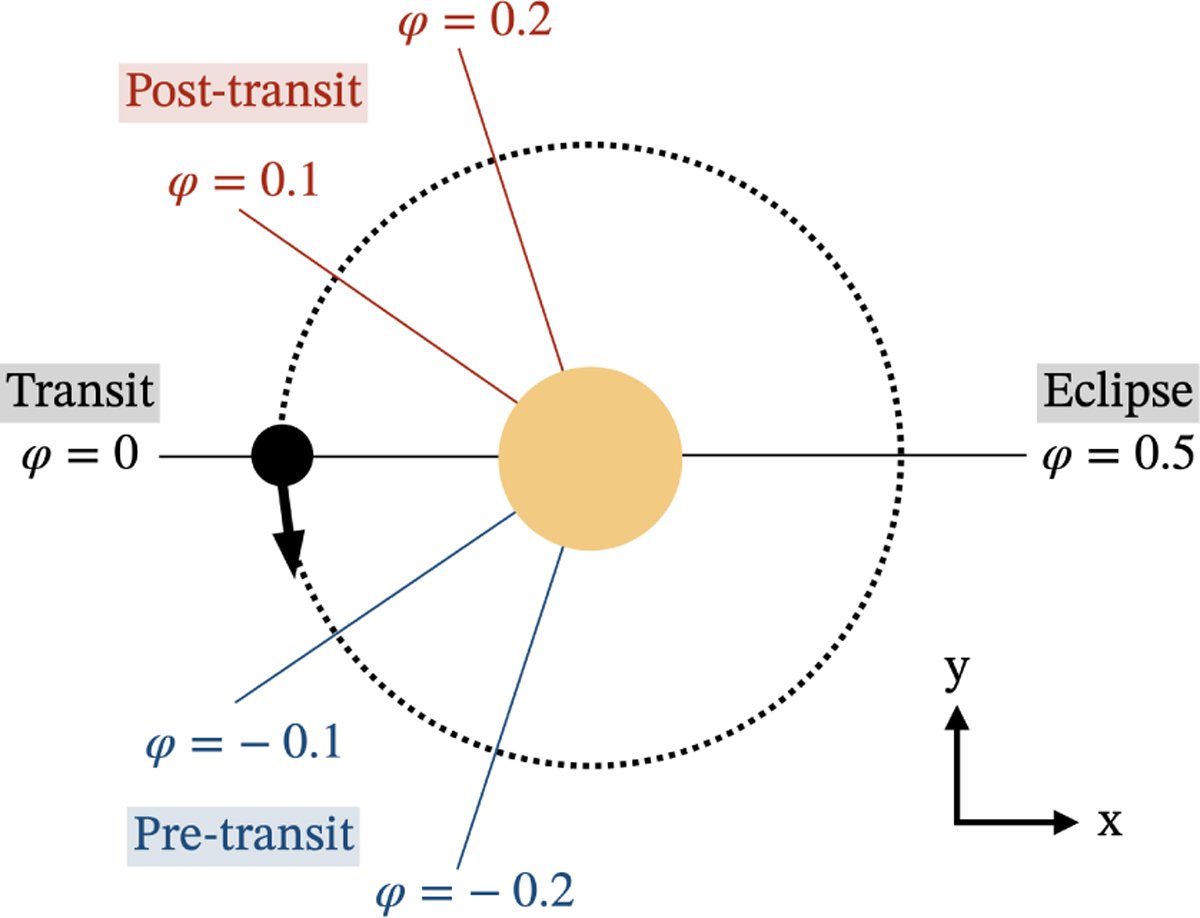Fig. 1

Download original image
Illustration (not to scale) of the observing strategy for the WASP-52 system. The planet orbits the central star counterclockwise, with different phase angles, φ, representing the observer’s line of sight to the system in the orbital mid-plane. During negative phase angles (pre-transit), the observer probes a potential leading tail of escaping atmosphere, while positive phase angles (post-transit) could reveal additional absorption from a trailing tail. Observations were conducted during both pre- and post-transit phases to assess the extent of atmospheric escape. For an out-of-transit spectrum, where the planet’s atmospheric contribution is expected to be minimal, additional observations were taken near eclipse, when the planet is obscured by the star.
Current usage metrics show cumulative count of Article Views (full-text article views including HTML views, PDF and ePub downloads, according to the available data) and Abstracts Views on Vision4Press platform.
Data correspond to usage on the plateform after 2015. The current usage metrics is available 48-96 hours after online publication and is updated daily on week days.
Initial download of the metrics may take a while.


